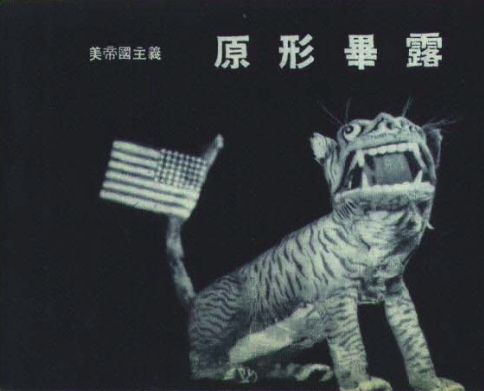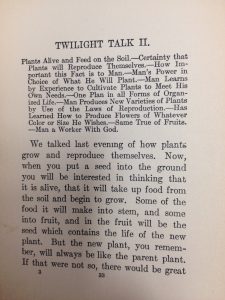3:7 Alberta and Partnership, Contrasting with Queen Victoria’s Family
53, 65-67, 85-90, 124-125, 171-172, 367-369, 377, 412-413, 422-423
One of the great narratives present in Green Grass Running Water is Alberta’s story and perspective on domestic partnership, pregnancy, and parenting. Women are central to the origin story, each of the four ‘Indians’ are female, all women who fell from the sky and were ‘discovered’ by white men (Flick). Of course, each of these women are given male names according to recorded history (King 53). As we continue on Alberta’s journey, we encounter Alberta’s own complicated reminiscence of her childhood and her parents, as well as her marriage that did not really feel like a partnership. By examining her past, as with many stories in this novel, her present choices make more sense. This is but one sliver into Alberta’s story, many contrasting details create her character.
Alberta Frank
The central theme of this post is Alberta’s relationship with marriage and partners, and by extension what she learns about other notable women in the novel and their partnerships.
That being said, I would first like to address Alberta’s namesake in GGRW. Flick suggests that Alberta is named after the town Frank, AB which experienced a devastating landslide when a mine collapsed:
Flick also comments on Alberta’s ‘nature’ being frank, or to the point. I do not agree with this statement completely – she will state her opinion, but King never fully allows a conversation about Alberta’s pregnancy to occur with Lionel or Charlie. In fact, we are never told by Alberta directly that she is in fact pregnant, it is assumed by other characters (Norma and Latisha) that she is (King 377). Alberta is asked by Charlie if she is pregnant, but she denies it. The reader could allude that this is a possibility, as she is in tears. In my experience, people who are throwing up generally have activated their tear ducts too. All in all, it is up to the reader, but many characters suggest that Alberta is pregnant. Isn’t this what she wanted?
“There was the matter of children. Alberta wanted at least one, perhaps two.” (King 65)
Alberta was married. She didn’t see this as an option again, considering her options of Charlie and Lionel. Her first marriage was with Bob. Nondescript Bob, who seems to symbolize the 1950’s college ‘sweetheart’ who wants a wife but not a partner. An interesting antithesis is Princess Louise Alberta’s partner, a man of a thousand names, but who went by the name of Marquis of Lorne. According to the Parliament of Canada website’s history on the Marquis, as Governor General to Prime Minister Macdonald, he recommended, “…call for greater respect for Métis and Indian treaties.” Perhaps it is propaganda from the parliament website, as most individuals in positions of power in the Canadian government did not really follow through with their beliefs of good will towards the Indigenous population, but it seems as if Alberta is seeking a partner who truly does respect all that she is and intends to be. A tall order, according to the women in this novel.
“And all the time, that faceless, nameless man sat in the nose of the plane… completely oblivious to impending disasters. Marriage was like that… But there were those driving expectations that hemmed her in and herded her toward the same cliffs over which her mother, her brothers, sisters, cousins, and friends had disappeared.” (King 85)
Alberta’s mother and Amos
Another relationship that Alberta is basing her idea of what marriage becomes, is from an early time in her life, watching her parents. As readers we are introduced to Amos as the man with his pants around his ankle in the snow, but in reality, he always stood up for his rights. Two instances, one with an American border guard, and the other, with the ‘missing’ truck (which was actually stolen and sold to a car dealership). Eventually he took to drinking (King 88).
Amos is a Hebrew name, originating from an 8th century Old Testament prophet. It means strong and brave. Although the namesake is not there, Amos shares a similar struggle to Queen Victoria’s husband, Albert (parents of Princess Alberta), who felt as if he was never quite in a position of power that would allow enough change. Arguably, Amos held a position of power as a police officer on the reserve, and was seen as a leader in his community. Though he never really had the amount of power that the white male border guards had over him.
Alberta’s mother, is referred to as ‘Ada’ by Amos (King 89). Sources indicate that the name means nobility (Behind the Name). Queen Victoria was renowned for her parenting ability, and in a time coinciding with the end of the first Industrial era and the dawn of a more consumerist ideology, children were beginning to be seen as a prize, to be cherished, unlike previously when they were considered additional labour (though I do not think this theory could be fully true).
Campbell, Mike. “User Comments For The Name Ada”. Behind the Name. Web.
Flick Jane. “Reading Notes for Thomas King’s Green Grass, Running Water.” Canadian Literature 161/162 (1999). Web. April 4th 2013.
“Heraldic Symbols In The Speaker’s Chambers – Senate Of Canada”. Parl.gc.ca. Web.
King, Thomas. Green Grass Running Water. Toronto: Harper Collins, 1993. Print.
Senior, Jennifer. For Parents, Happiness Is A Very High Bar. 2014. Web.







